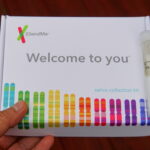It’s an unusual problem: The more people in rural areas Mark Romaninsky and his team help sign up for health insurance, the more difficult it becomes to find people who still need to enroll.
“It gets harder and harder every day,” he told The Daily Record. “How do you find those pockets of people?”
As program director for Seedco, a nonprofit that serves as one of several “connectors” for Maryland Health Benefit Exchange, Romaninsky and his team of “navigators” focus on the upper and middle Eastern Shore, reaching out to churches, small businesses, local workforce investment boards, “anywhere we can spread the word,” he said.
While progress has been made to reduce the number of uninsured Marylanders in the past three years, Seedco’s territory is where there’s still a lot of work to do.
About 405,000 Marylanders were eligible for private insurance and some form of financial help — such as tax credits or cost-sharing — when the exchange was launched in 2013; that number has now dropped 40 percent to about 240,000, officials announced May 16.
Those estimates don’t include people who qualify for Medicaid, according to the exchange.
“With the help of many partners and sister state agencies, we’ve made sizable progress in reducing the number of uninsured Maryland families,” Carolyn Quattrocki, executive director of the Maryland Health Benefit Exchange, said in a statement. “And we have many plans in the works to enhance consumer assistance and make even greater progress in the coming open enrollment that begins Nov. 1.”
The highest concentrations of Marylanders still eligible are found in more rural areas: Carroll, Calvert and St. Mary’s counties, for example, and on the Eastern Shore south of Cecil County.
Each of those areas has between 8,000 and 10,000 people still eligible, according to the nonproft State Health Access Data Assistance Center launched by the Robert Wood Johnson Foundation and the University of Minnesota School of Public Health.
That estimate will serve as a sort of playbook to direct the exchange’s marketing and outreach efforts for the coming year, said Andrew Ratner, a spokesman for the exchange. Outreach with church groups and libraries, for example, has helped spread the word in the past, he said.
Romaninsky said Seedco’s navigators — they have one per county in Caroline, Kent, Dorchester, Talbot and Queen Anne’s counties — have regularly asked church leaders if they can speak at ministry meetings, or even services, and speak directly to small businesses who may not provide insurance to their employees.
Now, they’re working to identify new venues or groups to talk to, such as elk lodges or gun clubs, he said.
Simple word-of-mouth has also been helpful in the rural areas; if a navigator signs someone up, their relatives will often reach out for assistance as well, Romaninsky said.
Since the exchange launched, more than 1 million residents have used it to enroll in health coverage and 90 percent have received financial support for private insurance or enrolled in Medicaid, according to the exchange.
Topics Maryland
Was this article valuable?
Here are more articles you may enjoy.


 23andMe Settles Data Breach Lawsuit for $30 Million
23andMe Settles Data Breach Lawsuit for $30 Million  Industry Critiques Trump’s Auto Insurance Rate Data, Promise to Cut Premiums
Industry Critiques Trump’s Auto Insurance Rate Data, Promise to Cut Premiums  US Property Insurance Rates Fall for First Time Since 2017
US Property Insurance Rates Fall for First Time Since 2017  Study Stirs Debate on Real Impact of Litigation, Fraud on Property Insurance
Study Stirs Debate on Real Impact of Litigation, Fraud on Property Insurance 

